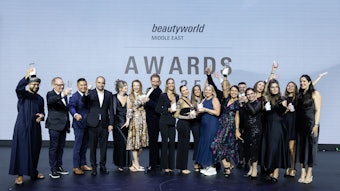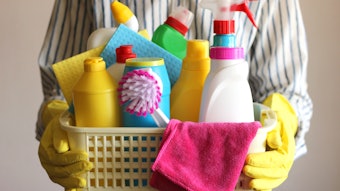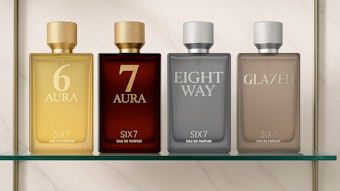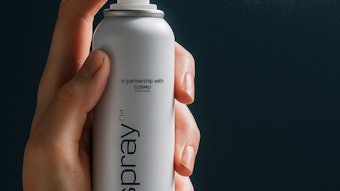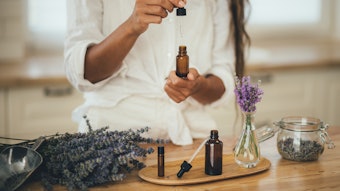
In September 2023, Perfumer & Flavorist+ attended the Research Institute for Fragrance Materials (RIFM) 57th Annual Meeting in New Jersey. President Anne Marie Api shares current projects, upcoming studies and more in this one-on-one interview.
Can you share a few words about the recent RIFM 57th Annual Meeting?
Anne Marie Api [AMA]: The Research Institute for Fragrance Materials’ (RIFM) strategy guides and informs everything we do, from the ongoing research that refines our safety assessment process to the communications through which we educate and engage with fragrance safety stakeholders worldwide.
At this year’s Annual Meeting, we highlighted our New Approach Methodology (NAM) Strategy, which guides and prioritizes our research projects. NAMs refer to non-animal-based approaches to provide information for the hazard and risk assessment of fragrance ingredients.
We also highlighted some of RIFM’s ongoing collaborations—through our featured speaker, the International Collaboration on Cosmetics Safety’s Erin Hill, formerly of the Institute for In Vitro Institute Scientists, and this year’s RIFM Board of Directors Excellence in Science Award winner, Dr. Daniel C. Liebler, a former member of the Expert Panel for Fragrance Safety. RIFM strategically collaborates across academia, industry, and governmental agencies to facilitate the free exchange of critical science and information and eliminate duplicative effort.
Additionally, the Annual Meeting is a place to reflect on the highlights from the previous year. Dr. Robert Weinstein, Chair of the RIFM Board of Directors, and Dr. Anne Marie Api, RIFM President, reported on the milestone of having a safety assessment on more than 1800 fragrance ingredients, with almost 1600 published in the peer-reviewed literature. RIFM’s maintenance program has been in place since 2020 with every fragrance material reviewed every 5 years.
The Annual Meeting is also a forum for fragrance safety stakeholders worldwide to engage and form collaborations with and learn from their peers.
How has RIFM adapted over the years with engagement with the industry and members?
AMA: RIFM does what it does to ensure everyone can safely enjoy their favorite fragranced products. We have always relied on collaboration and strategy to ensure this. But, most recently, we’ve begun to communicate our ongoing progress in a much broader way. RIFM’s peer-reviewed and published science, including dozens of recent research papers and safety assessments covering some 1,600 fragrance ingredients, is free to anyone who wants or needs it via the Fragrance Ingredient Safety Assessment Center.
Can you touch on current projects/studies RIFM is working on?
AMA: Currently, RIFM’s priorities include a series of published and in-progress papers on RIFM’s clustering process, a low-exposure paper, and an update to our environmental framework.
RIFM’s Computational Chemistry team recently created a video introducing the process and several short Q&A introductions to clustering, the read-across process, and endpoint-specific read-across. Read-across is an internationally recognized alternative to animal testing. Scientists use an ingredient for which there is a lot of data to help predict the toxicological profile of a structurally similar ingredient for which little to no data exists. Before identifying a scientifically sound read-across ingredient, the first big step is to cluster all ingredients in current use so that scientists can easily isolate those with similar safety profiles.
The low-exposure paper makes abundantly clear what RIFM scientists have known for a long time: Even those consumers in the top 5% of product usage are exposed to very little fragrance, even when considering all products used. The exposure to the vast majority of fragrances falls below the Threshold of Toxicological Concern, or TTC, a level beneath which science tells us there is no real risk for harm.
Finally, it has been two decades since the first landmark publication of the RIFM Environmental Framework, and we are updating it to make it more comprehensive. The refined version includes new developments in computational modeling and updates in study guidelines and methodologies that became available after the 2002 Framework was published.
Are there any upcoming studies or events fragrance/personal care industry professionals can partake in or be on the lookout for?
AMA: We have two exciting free online events in October and November, respectively.
On Wednesday, October 18, science journal publisher Elsevier is hosting a webinar to help fragrance safety stakeholders get the most out of our new series of NCS Safety Assessments. NCS stands for Natural Complex Substances and refers to ingredients extracted from plants and used in fragrance mixtures for various consumer products.
On Wednesday, November 29, RIFM will hold its 2nd Annual Science Symposium: We’ve Got It Covered, a four-hour event that will include extended discussions of some of our critical research and collaborations, along with several fully interactive sessions wherein fragrance safety stakeholders can ask RIFM scientists and our collaborators’ questions live in real-time.
From your perspective, what are the current focuses for RIFM?
AMA: While science constantly evolves, RIFM’s primary focus hasn’t changed since we were incorporated as a non-profit science institute in 1966: Ensuring consumers can safely enjoy their favorite fragranced products. What has changed are some of how we accomplish that goal.
For more than a decade, our entire Research Program, in addition to helping refine our Safety Assessment process, has been focused on specifically developing and refining animal-alternative methodologies to broaden the toolbox available to all those performing safety evaluations.
Finally, as we near the completion of evaluating and publishing safety assessments for all fragrance-producing ingredients in current use, we have made enormous headway into the simultaneous task of reevaluating every assessment five years after its first publication.



